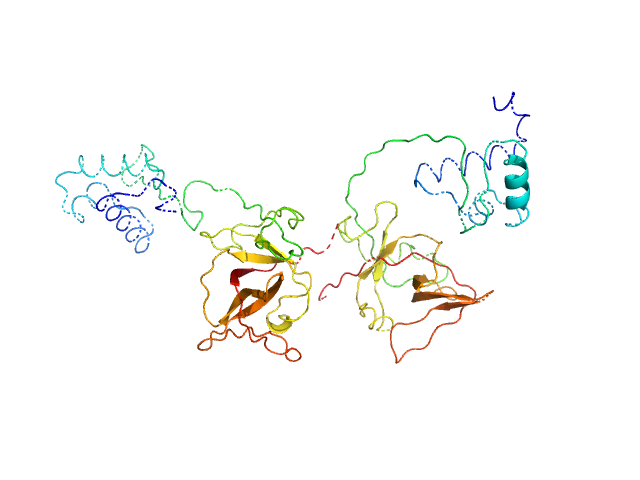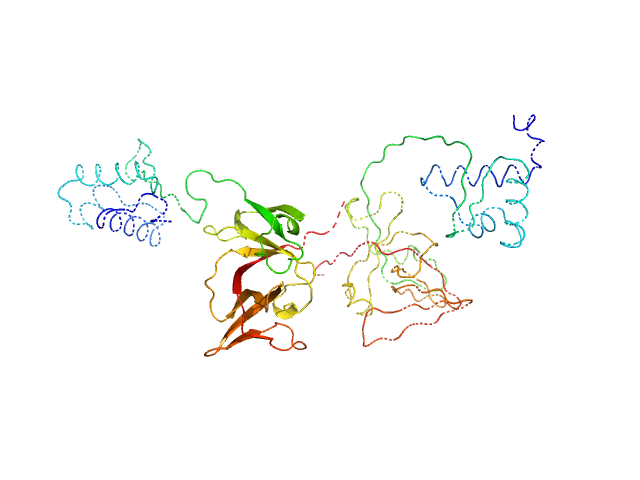| MWexperimental | 64 | kDa |
| MWexpected | 47 | kDa |
| VPorod | 110 | nm3 |
|
log I(s)
9.40×10-1
9.40×10-2
9.40×10-3
9.40×10-4
|
 s, nm-1
s, nm-1
|
|
|
|

|
|

|
|

|
|
SAXS data from solutions of Bacillus thuringiensis LexA repressor (Bt_LexA) in 20 mM HEPES, 300 mM NaCl, 10% glycerol, pH 8 were collected on a Rigaku BioSAXS-2000 instrument at the University of British Columbia (Vancouver, Canada) using a Hybrid Pixel Array Detector Rigaku HyOix-3000 detector at a wavelength of λ = 0.154 nm (l(s) vs s, where s = 4πsinθ/λ, and 2θ is the scattering angle). Solute concentrations ranging between 5 and 40 mg/ml were measured at 6°C. 12 successive 300 second frames were collected. The data were normalized to the intensity of the transmitted beam and radially averaged; the scattering of the solvent-blank was subtracted. The low angle data collected at lower concentration were merged with the highest concentration high angle data to yield the final composite scattering curve.
Sample detector distance = UNKNOWN |
|
|||||||||||||||||||||||||||